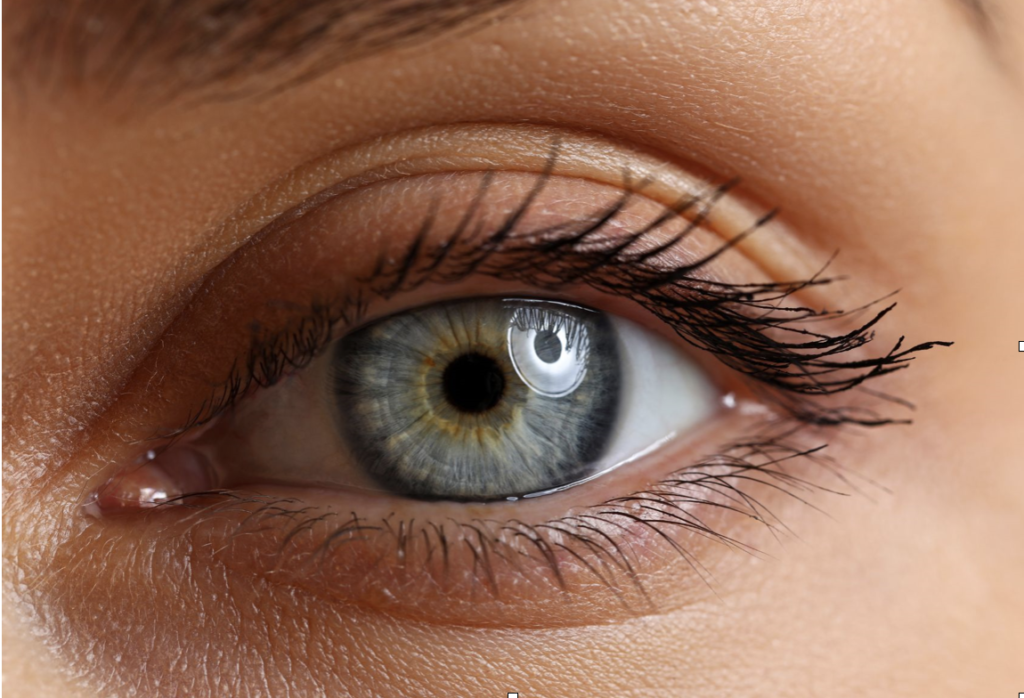The surface of our eyes, our tear film, is the barrier between the outside world and our eyes. If it’s functioning well, our vision is better, our eyes feel great, and we do not think about our eyes. If the tear film is dysfunctional, our vision can fluctuate, be of poor quality and our eyes feel gritty, sandy or watery and all we can think about is our eyes.
If you do not suffer from dry eye symptoms, count yourself lucky and make sure you start to incorporate these tips into your regular routine in order to maintain clear, white eyes. If you do suffer from dry eye, you may already be doing some or all these things and may just need the reminder to be more diligent with them.
- Hydration: The tear film is composed of 3 layers and the thickest, middle layer is a watery layer. If we are dehydrated, our tear film can not maintain an adequate, even thickness to coat our eyes. Good hydration is important for the whole body and our eyes are an important part of that.
- Omega-3 Fatty Acids: Omega-3 fatty acids help compose the outer, oily layer of our tears. The typical diet is not getting enough Omega-3 fatty acids (are you eating fish 2-3x/week?) and requires supplementation. Aiming for 2000mg/day of a high-quality EPA/DHA fatty acid supplement will improve the oil glands in your eyelids and ultimately the quality of your oily tear layer. When these oil glands become chronically inflamed, our eyelids become thickened and look rimmed in red.
- Sunglasses: Most of us know the importance of UV protection when outdoors. Sunglasses help protect our eyes from conditions later in life like cataracts and age-related macular degeneration. But did you know that excessive UV exposure can create little yellow bumps on the whites of your eyes? Constant wind and UV exposure causes the whites of our eyes to create scar tissue to defend itself – this creates elevations on the whites of our eyes that disrupt our tears and are cosmetically unappealing (Google pingueculum if you are curious!). They can be removed surgically but often come back again – so wear your sunglasses now before that’s an issue.
- Blinking: It is so simple but when we spend so much time on our screens, we forget to blink. Our blink rate reduces dramatically, which means our tear film is not replenished enough and the surface of our eyes dries out. This leads to that burning, tired feeling that we get after a long day of screens. An easy way to remember to blink: every 20 minutes, look away from your screen and do 20 full, complete closures of your eyelids.
- Eyelid cleansing: Our eyelashes are designed to keep debris out of our eyes, so understandably they need to be cleaned. It s like wiping crumbs off your countertops – if you do not clean your washcloth, you are just moving around the crumbs and creating buildup on the countertop! Every morning and evening, cleanse and gently scrub the base of your eyelashes with an eye-safe product. This is extra important if you wear makeup or eyelash extensions!
- Hot compresses: The oily, outer layer of our tears is produced by tubes in our eye lids called meibomian glands. These glands get plugged over time – a full blockage is often called a stye – and need to be cleared out and expressed. Applying a hot compress to your closed eyelids for 10-15 minutes will melt these oils and allow them to improve their quality and consistency.
It is never too late to start caring for your ocular surface. Not only will the quality of your vision improve, your eyes will look whiter and feel more comfortable. If you have been suffering with dry eye disease, you might benefit from more advanced therapies such as prescription drops, intense pulsed light (IPL), radiofrequency and special contact lens therapies. These therapies can kickstart your home routine, improve redness and get you seeing results sooner!
Interested in jumpstarting your home routine with an in-office treatment? Call Trailside Eye Care for a consultation today at 226-383-8880 or book online at www.trailsideeyecare.com.



